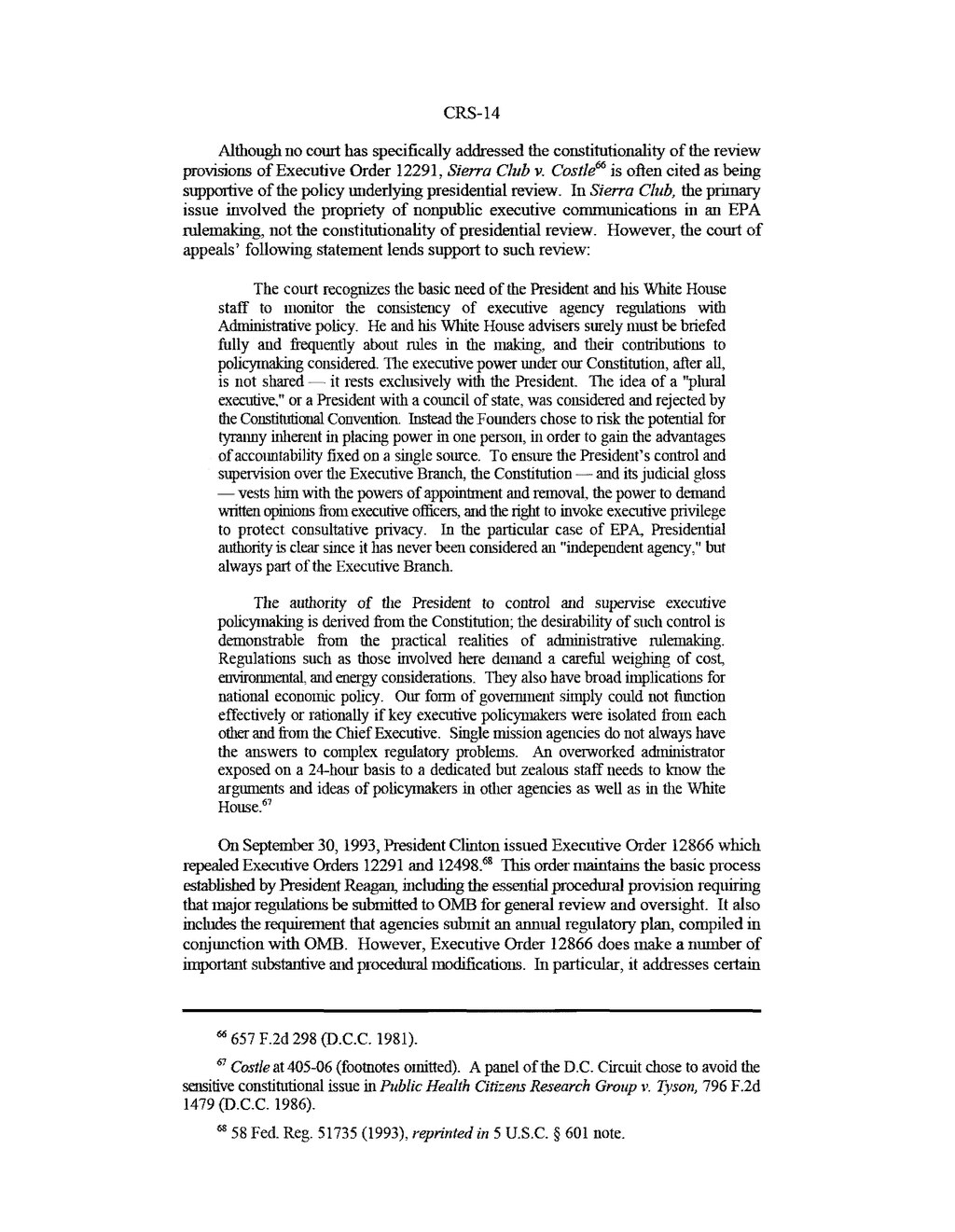CRS-14
Although no court has specifically addressed the constitutionality of the review provisions of Executive Order 12291, Sierra Club v. Costle[1] is often cited as being supportive of the policy underlying presidential review. In Sierra Club, the primary issue involved the propriety of nonpublic executive communications in an EPA rulemaking, not the constitutionality of presidential review. However, the court of appeals' following statement lends support to such review:
The Court recognizes the basic need of the President and his White House staff to monitor the consistency of executive agency regulations with Administrative policy. He and his White House advisers surely must be briefed fully and frequently about rules in the making, and their contributions to policymaking considered. The executive power under our Constitution, after all, is not shared — it rests exclusively with the President. The idea of a "plural executive," or a President with a council of state, was considered and rejected by the Constitutional Convention. Instead the Founders chose to risk the potential for tyranny inherent in placing power in one person, in order to gain the advantages of accountability fixed on a single source. To ensure the President's control and supervision over the Executive Branch, the Constitution — and its judicial gloss — vests him with the powers of appointment and removal, the power to demand written opinions from executive officers, and the right to invoke executive privilege to protect consultative privacy. In the particular case of EPA, presidential authority is clear since it has never been considered an "independent agency," but always part of the Executive Branch.
The authority of the president to control and supervise executive policymaking is derived from the Constitution; the desirability of such control is demonstrable from the practical realities of administrative rulemaking. Regulations such as those involved here demand a careful weighing of cost, environmental, and energy considerations. They also have broad implications for national economic policy. Our form of government simply could not function effectively or rationally if key executive policymakers were isolated from each other and from the Chief Executive. Single mission agencies do not always have the answers to complex regulatory problems. An overworked administrator exposed on a 24-hour basis to a dedicated but zealous staff needs to know the arguments and ideas of policymakers in other agencies as well as in the White House.[2]
On September 30, 1993, President Clinton issued Executive Order 12866 which repealed Executive Orders 12291 and 12498.[3] This order maintains the basic process established by President Reagan, including the essential procedural provision requiring that major regulations be submitted to OMB for general review and oversight. It also includes the requirement that agencies submit an annual regulatory plan, compiled in conjunction with OMB. However, Executive Order 12866 does make a number of important substantive and procedural modifications. In particular, it addresses certain
